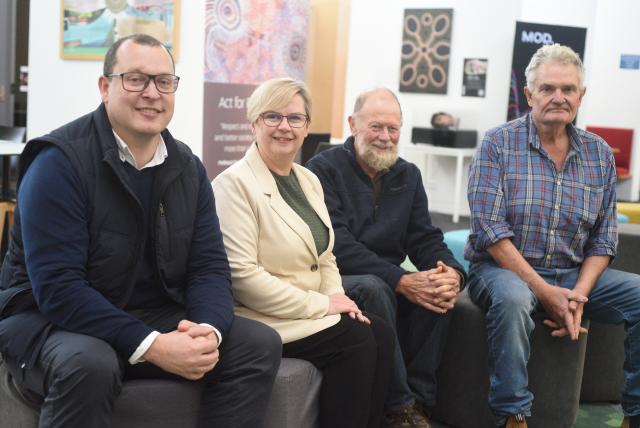
Charlotte Varcoe
THE next steps on the Trees on Farm initiative instigated by the State Government has been taken following a seminar with key stakeholders.
About 50 stakeholders, including industry leaders and farmers, gathered in Mount Gambier/Berrin late last week to discuss and learn more about the initiative.
In March 2022, the State Government announced it would commit to the initiative in an effort to reestablish pine plantations for future fibre needs.
The initiative has anticipated a number of outcomes if successful including increasing wood fibre supply, diversifying farm incomes, increasing regional investment by the forestry industry as well as developing employment opportunities and support for regional communities.
Other outcomes include an investment in forestry research and partnerships within the forest industry supply chain.
According to Primary Industries Regions South Australia, management would include survival counts, weed control, fertilising, protection, pruning and thinning.
Limestone Coast farmers Peter Feast and Michael Cornish, who also attended the seminar, agreed the initiative had positive aspects for the foreseeable future.
Mr Feast said he believed it was a great initiative with more trees in the ground needed for the environment.
“There are environmental benefits as well as economic benefits along the way for livestock and the environment in general,” Mr Feast told The Border Watch.
“I have a farm where I run sheep and we have had a lot to do with the forestry industry over the last few decades.
“We have also been planting a lot of trees and amongst that there has been a little bit of forestry in there.”
He said he believed the initiative would benefit the younger generations while showing farmers the benefits which could come from tree planting.
“It will also help the demand that is going to be there for timber products in the future,” Mr Feast said.
“I think this will just be another good initiative and anyone who has some land has the opportunity to add to it and diversify their property.”
Mr Cornish said he also had experience in forestry growing as well as sheep and cattle management and vineyards.
All up, the local farmer runs about 490 hectares of land and was already involved in the forestry industry.
“With trees on farms we increased profitability and I do encourage more farmers to take it up,” Mr Cornish said.
“You will have to wait a while for the income and it is not an even cash flow so there are some problems but with carbon credits and increased profit margins, it is a better enterprise.”
He said having forestry trees on his property was something he was eager to continue despite the barrier with the water licencing.
“The water licence is a barrier and that needs more discussion and I do think there is a lot more infrastructure that needs to be put in,” he said.
“I don’t think we can continue to transport logs to and from Melbourne either because it is thrashing our roads and we really need more local processing.”
South Australian Forest Products Association chief executive officer Nathan Paine said the association was pleased to be able to engage with the State and Federal Government to roll out the Trees on Farms initiative.
“What we know is in South Australia, particularly in the South East, we have lost both directly and indirectly between 20,000 to 30,000 hectares of trees,” Mr Paine said.
“We know one of the big ways we are going to be able to get more trees in the ground is through working with farmers.
“We see this program as a critical component to getting more trees in the ground which will allow for more fibre in the future that will benefit for providing a diversified farm income for farmers.”
He said the initiative would also allow for fibre for timber mills to process into housing frames for the future.
“This seminar was a critical waypoint for this program as it gave much needed additional information for farmers so we can better inform the other agricultural landscape users and provide them with the information they need,” Mr Paine said.
“It was a step of getting more information, educating other landscapers and we look forward to working with them in future partnerships to get more trees in the ground, sequester more carbon from the atmosphere and make sure we have a strong and viable future for the forest industries.”
Minister for Primary Industries and Forestry Clare Scriven said the purpose of the seminar was to provide the information that farmers and other landholders needed to determine whether or not having small plantations as part of their farming business would be appropriate for them.
“There have been a number of research projects that have occurred and we know there are benefits including providing shelter for stock and shade and improving soil as well as financial benefits which are potentially around carbon credits and also income stream diversification for farmers,” Ms Scriven said.
“We know we have a domestic and worldwide shortage of timber and it is important for all of us that we have increased timber supplies.”
She said those who may be interested in investigating having a small plantation of forestry on their farms were able to determine whether it worked for their business and their business model.
“One of the things we are keen to provide is connections to the experts around managing such a long-term crop,” she said.
“Obviously farmers do not have experience with timber as a crop and so the purpose of this sort of seminar and the other work we are doing around trees on farms is to be able to increase information about them and potentially open up partnerships around management.”







